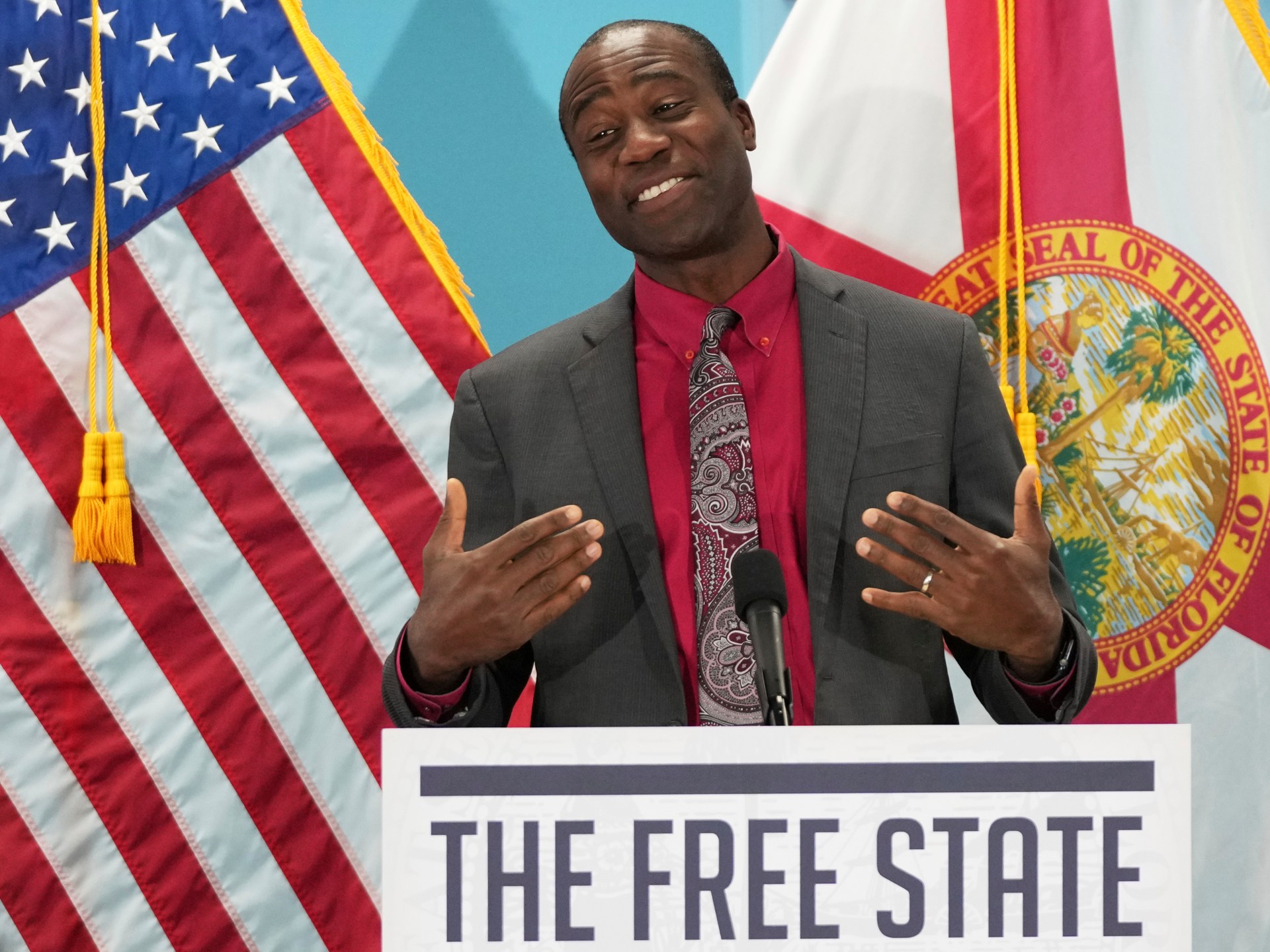The delay in pulling Oregon National Guard members out of Portland’s immigration enforcement building after a judge had barred their federal deployment resulted from having to relay the order through a chain of command, federal government lawyers told a judge Thursday.
“It took some time for us to fully implement compliance,” said Eric Hamilton, U.S. Department of Justice attorney.
Seven to 10 Oregon National Guard soldiers were sent to Portland’s U.S. Immigration and Customs Enforcement facility on Oct. 4 at 11:35 a.m. and remained at the building until midnight that day, about eight hours after U.S. District Judge Karin J. Immergut’s order was issued, Hamilton said.
Immergut pressed, “Who was responsible for notifying the National Guard in the building that the court had prohibited their deployment? Who was responsible for it?”
Hamilton said the direction came from “high up in the chain of command,” of the San Antonio-based U.S. Army Northern Command, involved a four-star general and “people in different time zones.”
Immergut said it seemed odd that the federal government, though, could mobilize and send 100 California National Guard to Portland by the following morning, Oct. 5, to Portland “but they couldn’t get the message” to the Guards troops at Portland’s ICE building to leave.
“They could have gotten the message to the Guardsmen if they felt it was important,” she said.
Hamilton said the government worked as “quickly as it could,” but her temporary restraining order, issued about 3:40 p.m. on Oct. 4, had to be relayed through multiple layers of command.
Immergut then asked why the federal government would send any Oregon National Guard to the city’s ICE facility on the morning of Oct. 4, knowing she was deliberating over the arguments and evidence presented at a hearing just a day earlier and had promised to issue a ruling as fast as she could that weekend.
“Does that not seem to be in bad faith in some way?” Immergut asked.
Hamilton said he didn’t think so.
“So you needed those eight National Guardsmen at the ICE building?” the judge asked.
“We did,” Hamilton responded.
Hamilton did not explain what those Guards members were doing at the ICE building that day and night. A court exhibit, though, indicated an “Advanced MP squad,” of nine Guard members had arrived at the Portland ICE facility in a support role around 11 a.m. in what was dubbed “Task Force Rose Shield.”
Their shift ended at midnight but Hamilton added that he did not know the precise time that the Guard was “pulled back from providing protection.”
The judge thanked Hamilton for providing further clarification but said she anticipated addressing the matter at a future hearing.
The remarks came before the start of the second day of trial in Immergut’s courtroom in downtown Portland as she considers the state of Oregon and California and city of Portland’s request for a permanent injunction that would prevent the federal deployment of National Guard from any state to Portland.
COST OF PORTLAND POLICE RESPONSE
The city and states continued presenting their case Thursday morning, calling Portland Assistant Chief Craig Dobson to the stand.
Dobson testified that the police response to the protests outside the ICE building since June have so far cost $898,689.92 in largely personnel and overtime costs.
Dobson said Portland police don’t fire pepper balls and would not fire less-lethal munitions off of a roof into a crowd, as federal officers have repeatedly done during protests outside the ICE building in the South Waterfront neighborhood.
He also shared his concern about the potential deployment of National Guard members to the ICE facility.
“My concern again is, ‘What is their training?’” he said. “Crowd management is complex.” He said he worries that how they might show up can negatively affect the tenor of a crowd.
The city played a video capturing the night of Oct. 18, after the “No Kings II” march through the city culminated with about 400 to 500 people congregating outside the immigration facility.
Dobson said he got a “whiff” of tear gas fired by federal officers into the crowd that night, and the state police on bikes who had no gas masks had to leave the area.
He also identified an apparent munition fired by a federal officer into the ground in front of the ICE facility that ricocheted and bounced off the building and “back at” federal officers on the roof.
Immergut attempted to redirect the city’s line of questioning, asking why Senior Deputy City Attorney Caroline Turco was focusing on the events of Oct. 18, and not on the situation outside the ICE property in the days and weeks leading up to Trump’s Sept. 27 authorization of National Guard members to Oregon.
The judge said she’s not deciding if federal officers have used improper force. She’s focused on whether Trump met the legal criteria for mobilizing National Guard members to deploy to Portland in late September based on the conditions at the ICE facility at the time.
“We have a limited time for trial,” Immergut said. “Let’s focus on what really matters.”
During cross-examination by federal Justice Department attorney Michael J. Gerardi, Dobson acknowledged he is unaware of how the National Guard is being trained for a deployment to the city and does not know what the nature of the work would be.
Operation Skip Jack Portland
By late morning, the federal government began its case, calling a deputy regional director of the Federal Protective Service from Region 10, which covers five states including Oregon. The director was only identified by his initials, R.C, for what the court called security purposes.
The surge of federal officers to provide around-the-clock protection of the Portland ICE building — dubbed “Operation Skip Jack Portland ” — is unsustainable, the Federal Protective Service’s deputy regional director testified Thursday.
He also said he was disappointed by a lack of response and assistance from Portland police, estimating that police did not respond 40 times to requests by Federal Protective Service officers who reached out for help since June at the ICE building and didn’t get it.
After police declared a riot outside the facility on June 14, federal officers from outside the region as well as officers from U.S. Immigration and Customs Enforcement and U.S. Customs and Border Protection’s tactical team were reassigned to help provide support at the building, he said.
Since then, agents from the FBI, the Drug Enforcement Administration, the U.S. Bureau of Alcohol, Tobacco and Explosives and the Bureau of Prisons have also assisted at the ICE facility, R.C. said.
“We have people from the Bureau of Prisons who are coming to protect the ICE facility?” U.S. Justice Department lawyer John Bailey asked him, in an effort to highlight the unusual assignment. RC answered in the affirmative.
During the June 14 riot, two Federal Protective Service officers were injured by thrown fireworks and one ICE officer was struck in the head with an object, presumably a rock, R.C. testified. Protesters had shattered the building’s front door, jamming it with a stop sign and a weight-lifting barbell, he said.
“Given the level of violence that was displayed that night, we did expect a response from the Portland Police Bureau,” he said. He said Portland officers eventually did respond, but it wasn’t until late in the evening between 11 and midnight.
“But by that point, there was a level of damage and uncertainty if we ever were going to receive that support from the Portland Police Bureau,” he testified.
A Portland police commander previously testified that local officers are restricted from clearing traffic in front of the ICE building.
Police Cmdr. Franz Schoening said that police officers have been instructed not to facilitate federal vehicles coming in and out of ICE facility due to the state’s sanctuary law. Police also were directed not to provide traffic control in the “immediate area” of the ICE building unless there was an immediate life-safety emergency or to support a tactical operation. Yet, they have attempted to keep Southwest Bancroft open for traffic, he said.
But R.C., the Federal Protective Service regional deputy director, testified that he only witnessed police clear traffic in front of the ICE building on two occasions since June: when the Emergency Naked Bike Ride road past and last weekend.
“When PPB is allowed to do their job, do you think they do good police work?” Bailey asked.
“Absolutely,” R.C. responded.
He testified that he believes 180 law enforcement officers are needed to provide 24-hour, seven-day-a week coverage the ICE building to protect the property and personnel amid the nightly protests.
Initially, he said federal officers were sent to the ICE facility for 30-day assignments but that was reduced to 20-day assignments to protect their mental health.
They’re typically working overtime, 10 to 12 hours at a time, “constantly in proximity to protesters who say some of the most vulgar, foul, racial slurs consistently through the day, throughout the night” on bullhorns.
R.C. said he believed protesters are coordinating their activities and the federal officers are keeping their ears to a walkie-talkie radio, “hoping to catch cross talk” between them, describing the step as something “new we developed.”
During cross-examination, the Federal Protective Service supervisor said there has been a systemic staffing shortage in his agency nationally. There are four Federal Protective Service officers assigned to Portland who are responsible for protecting about 100 federal properties in Oregon and southern Washington state.
While he had no say in Trump’s move to authorize National Guard to Portland, he said they would relieve the strain on his agency and other federal officers “would be able to go back to doing their primary job.”
He was surprised, in fact, to learn of the 200 Oregon National Guard troops mobilized for Portland, having discovered it first from news accounts.
In a deposition, he said he wondered what he would do with 200 Guard members because the ICE building was pretty packed with officers by late September, according to court testimony.
Federal Protective Service officers do not deploy gas but have fired pepper ball launchers and used large canisters of pepper spray.
He said FPS officers typically fire pepper balls at the ground, not at people, to get the chemical irritant to come up into the air as a “simple dispersal technique.”
But he said the Federal Protective Service does not track officers’ deployment of the pepper ball launchers.
Under cross-examination by Oregon Senior Assistant Attorney General Brian Marshall , he said he’s aware there are three alleged improper uses of force by federal officers that are currently under investigation within the last two months.
The officers and incidents were not identified but the state played one video of a crush of officers tackling a protester to the ground in front of the ICE building’s driveway on Aug 13.
When Marshall asked the Federal Protective Service officer if the force used was appropriate in the video, he said, “That is not the approach I would have taken.”
He also said he and other Federal Protective Service officers were exposed to tear gas a handful of times at the ICE building and asked incident commanders from other federal agencies to alert other officers present before gas is deployed.
If you purchase a product or register for an account through a link on our site, we may receive compensation. By using this site, you consent to our User Agreement and agree that your clicks, interactions, and personal information may be collected, recorded, and/or stored by us and social media and other third-party partners in accordance with our Privacy Policy.
First Appeared on
Source link











